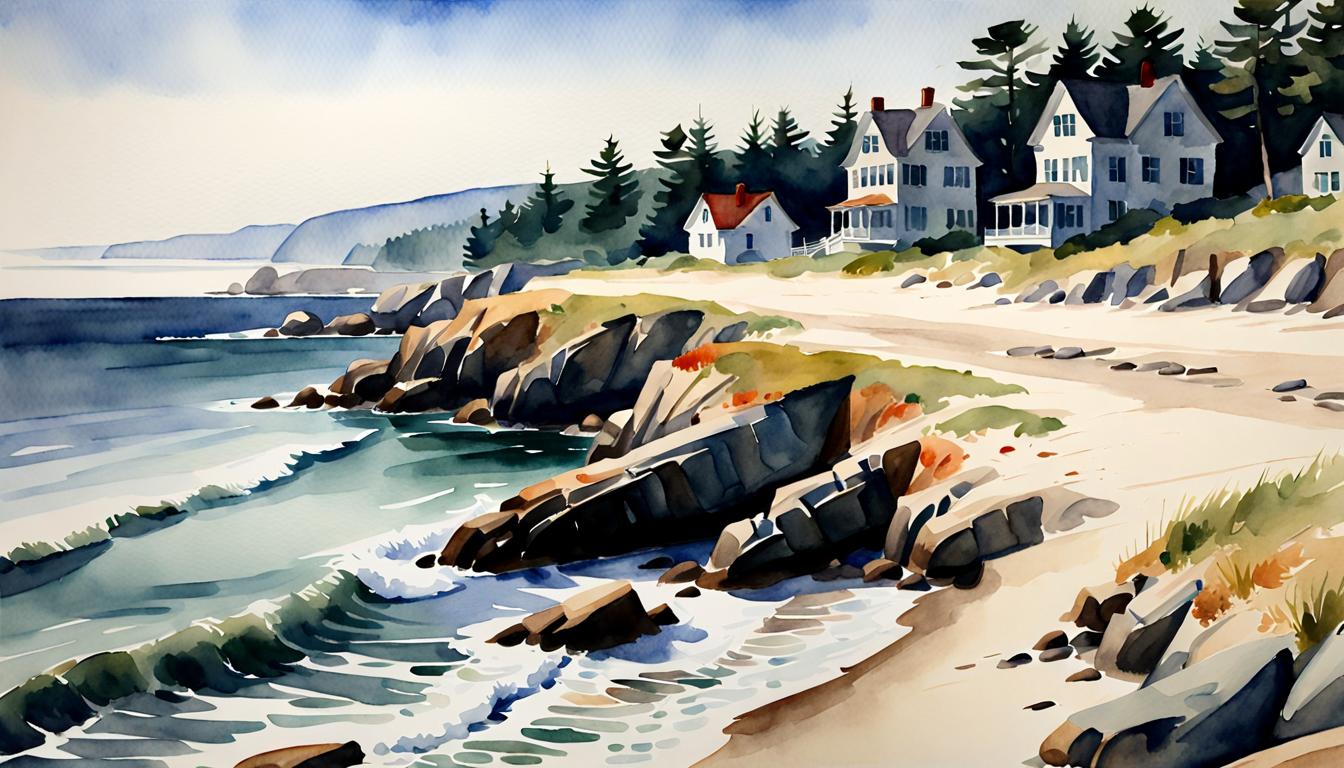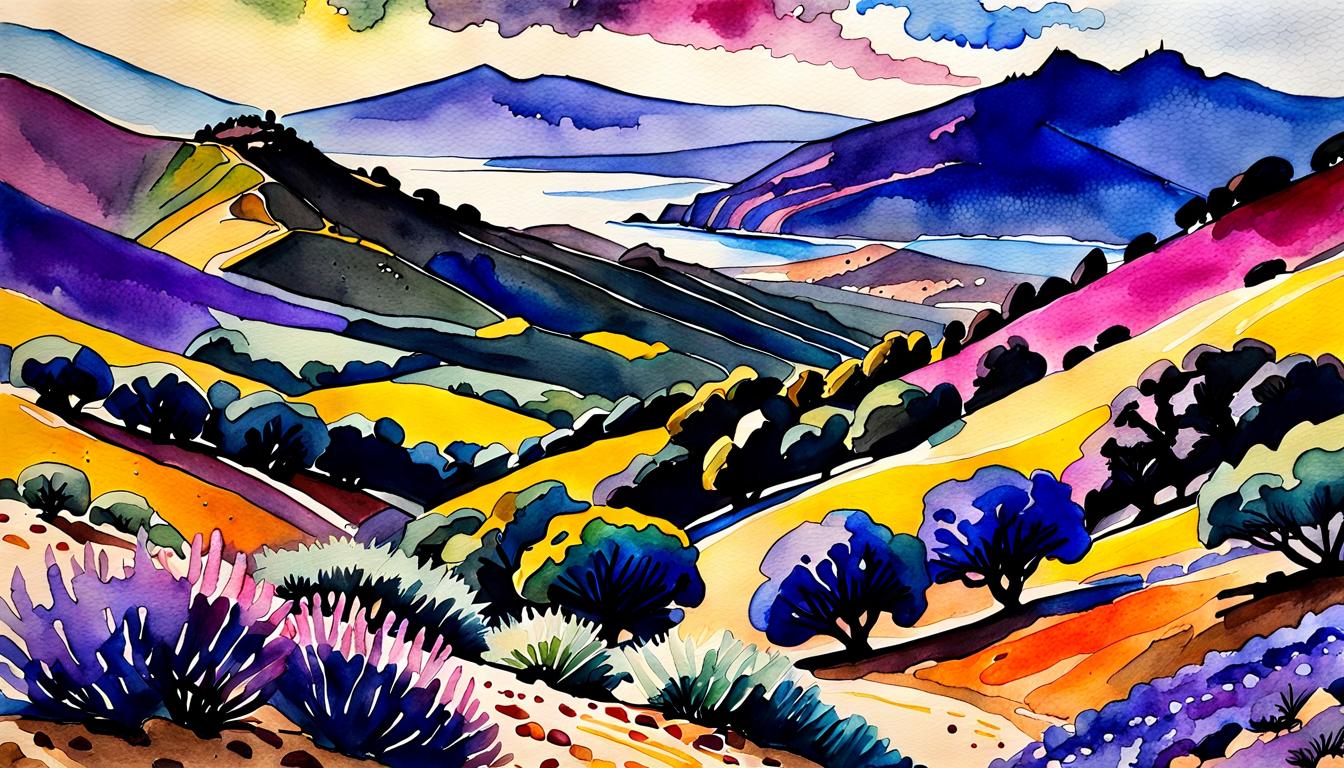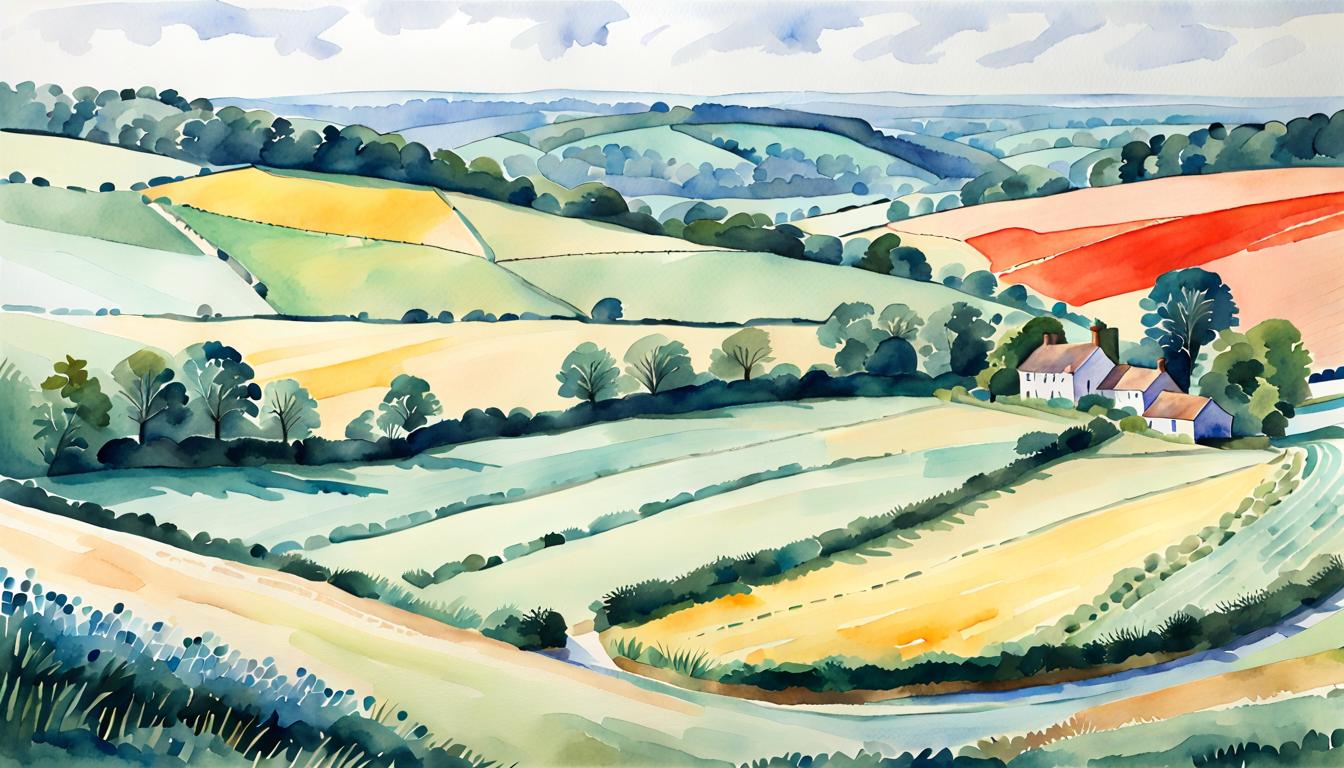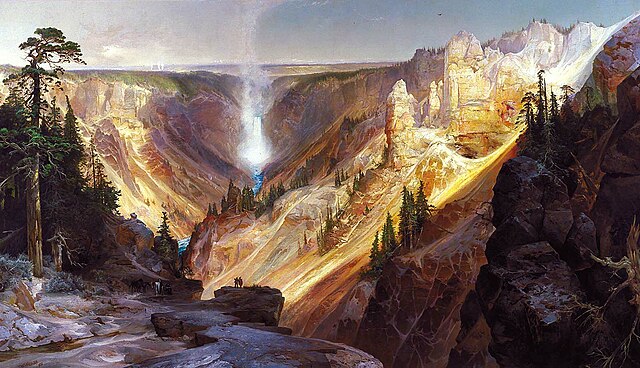
Thomas Moran, an artist whose name may not be as universally recognized as some of his contemporaries, has nonetheless left an indelible mark on the world of art, particularly through his mastery of watercolor landscapes. Born in England in 1837 and later immigrating to the United States, Moran found his muse in the vast, untamed wilderness of the American landscape. His work, especially his watercolors, captures the ethereal beauty of America’s natural environments, from the rugged cliffs of the Grand Canyon to the geothermal wonders of Yellowstone. This post delves into the life, art, and enduring legacy of Thomas Moran, with a focus on his watercolor paintings that continue to captivate and inspire. Through “Thomas Moran watercolors,” we explore not just the artist’s technique and style but also his profound impact on the appreciation of America’s natural beauty.
Early Life and Influences of Thomas Moran
Thomas Moran’s journey into the world of art began in Bolton, England, where he was born into a handloom weaving family. The Morans moved to America when Thomas was a child, settling in Philadelphia. It was here that Moran’s artistic talents began to flourish. Initially apprenticed to a wood engraving firm, Moran found his true calling in painting, inspired by the works of J.M.W. Turner, whose influence is evident in Moran’s choice of subjects and his approach to light and color.
Moran’s early work was characterized by a keen interest in landscapes, a genre that would define his career. His first major exposure to the American wilderness came in the form of a government-sponsored trip to the Yellowstone region in 1871. This expedition proved to be a turning point for Moran, providing him with the inspiration for a series of watercolors that would later cement his reputation as one of the foremost landscape artists of his time.
The influence of Turner, combined with Moran’s natural inclination towards the sublime beauty of the American landscape, set the stage for a body of work that was both uniquely American and deeply rooted in the watercolor tradition. “Thomas Moran watercolors” not only reflect the artist’s technical skill but also his profound connection to the land, a theme that would resonate throughout his career.
Evolution of Watercolor Art in Moran’s Career
Thomas Moran’s career in watercolor painting was not static; it evolved significantly as he grew older and more experienced. His evolution as a watercolorist can be traced through several phases:
- Early Experiments: Moran’s initial watercolor works were often studies for his oil paintings, serving as a way to quickly capture the essence of a scene.
- Mature Period: As Moran’s confidence in the medium grew, he began to treat watercolors as finished works in their own right, not just preparatory sketches.
- Later Years: In his later years, Moran’s watercolors became more fluid and expressive, often characterized by a looser style and a bolder use of color.
During his career, Moran’s watercolors transitioned from being mere precursors to his oil paintings to becoming standalone masterpieces that collectors and critics alike admired. His journey with watercolors reflects a broader trend within the art community, where watercolor painting began to be seen as a legitimate and respected medium.
Themes and Techniques in Moran’s Watercolors
Thomas Moran’s watercolors are rich with themes and techniques that make his work stand out. Here are some of the key elements:
Themes
- The American West: Moran’s most recurring theme is the American West, with its vast landscapes and untamed nature.
- Natural Beauty: He often depicted scenes of natural beauty, from serene rivers to dramatic mountain ranges.
- Human vs. Nature: Some of his works subtly explore the relationship between humans and the natural world.
Techniques
Moran employed various techniques in his watercolor paintings, which contributed to his distinctive style:
| Technique | Description |
|---|---|
| Wet-on-Wet | Moran often applied wet paint onto wet paper to create soft, diffuse effects in skies and water. |
| Drybrush | He used drybrush to add fine details and textures, especially in foliage and rocky surfaces. |
| Layering | By layering thin glazes of color, Moran achieved a luminous quality in his watercolors, reminiscent of the work of his idol, Turner. |
| Color Saturation | Moran was known for his use of vibrant colors, which made his watercolor landscapes come alive. |
Moran’s mastery of these techniques allowed him to capture the essence of the American wilderness with a vibrancy and immediacy that few other artists of his time could match. The keyword “Thomas Moran watercolors” encompasses not only the physical artworks but also the innovative methods he used to create them.
Impact of Moran’s Watercolors on Art History
Thomas Moran’s contributions to the world of watercolor and landscape painting have left a lasting impact on art history. His work not only captured the imagination of the public but also influenced the course of American art. Here are key points highlighting his impact:
- Promotion of National Parks: Moran’s watercolors of the Yellowstone region were instrumental in convincing the U.S. Congress to establish Yellowstone as the first national park. His art played a crucial role in the early conservation movement.
- Elevation of Watercolor: Moran helped elevate watercolor from a medium primarily used for sketches to a respected form for finished works, influencing generations of artists.
- Influence on American Landscape Art: His unique portrayal of the American West shaped the visual narrative of the American landscape, inspiring both contemporaries and future artists.
Notable Contributions to Art Collections
Moran’s watercolors are held in high esteem and form part of prestigious art collections across the country:
| Institution | Notable Works |
|---|---|
| National Gallery of Art, Washington D.C. | “The Grand Canyon of the Yellowstone” |
| Smithsonian American Art Museum | “Green River Cliffs, Wyoming” |
| Metropolitan Museum of Art, New York | “Under the Trees” |
These institutions, among others, house Moran’s works, allowing the public to witness the beauty and majesty of his watercolor landscapes.
Notable Watercolor Paintings by Thomas Moran
Thomas Moran’s oeuvre includes a vast array of watercolor paintings that have captivated audiences for over a century. Below are some of his most notable works, each illustrating his mastery of the medium and his deep connection to the American landscape:
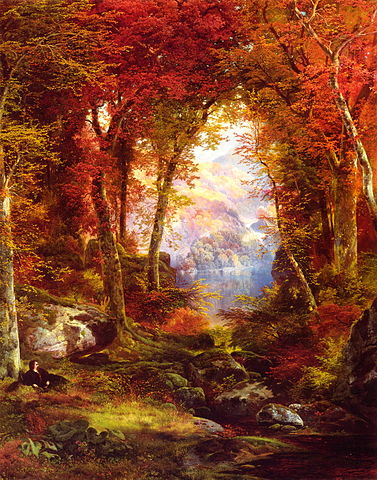
, Public domain, via Wikimedia Commons
- “The Grand Canyon of the Yellowstone” (1872): One of Moran’s most famous works, this painting played a key role in the establishment of Yellowstone National Park.
- “Childe Roland to the Dark Tower Came” (1859): An early work showcasing Moran’s interest in dramatic landscapes and literary themes.
- “Green River Cliffs, Wyoming” (1874): A stunning depiction of the rugged terrain and vast skies of the American West.
- “Venice: The Lagoon Looking toward Santa Maria della Salute” (1886): Demonstrates Moran’s versatility and his ability to capture the unique light and atmosphere of Venice.
These works, among others, exemplify the range of Moran’s talent and his ability to convey the sublime beauty of the natural world through watercolors.
Legacy and Recognition
Thomas Moran’s legacy extends beyond his watercolor paintings, influencing the broader cultural and artistic landscape. His recognition came from various quarters:
- Artistic Influence: Moran’s approach to landscape painting influenced the Hudson River School and helped shape the American vision of the West.
- Cultural Impact: His works contributed to the cultural identity of the United States by highlighting the grandeur of its natural landscapes.
- Preservation and Conservation: Moran’s art has been associated with the early conservation movement, advocating for the preservation of America’s natural wonders.
Awards and Honors
Throughout his career, Moran received numerous accolades, reflecting his status as a leading artist:
| Award/Honor | An honour recognizing his contributions to American art. |
|---|---|
| Elected as a member of the National Academy of Design | An honor recognizing his contributions to American art. |
| Appointed as the official artist of the U.S. Geological Survey | His role in documenting the American West. |
| Works commissioned by Congress | His paintings were used to promote the beauty of the American landscape to lawmakers and the public. |
Moran’s accolades underscore his importance in the art world and his role in the cultural heritage of the United States.
Conclusion
Thomas Moran’s watercolors offer a window into the soul of the American wilderness, capturing its essence with a blend of technical prowess and emotional depth. His work has not only enriched the world of art but has also played a part in the historical narrative of the United States. “Thomas Moran watercolors” symbolize the artist’s enduring legacy:
- Artistic Mastery: Moran’s skillful use of watercolor has inspired countless artists and continues to be studied and admired.
- Cultural Significance: His paintings have helped to define the visual iconography of the American landscape.
- Enduring Impact: The beauty and significance of Moran’s watercolors ensure that his work remains relevant and celebrated in art history.
In exploring the watercolor mastery of Thomas Moran, we are reminded of the power of art to influence society, preserve history, and celebrate the natural world.
